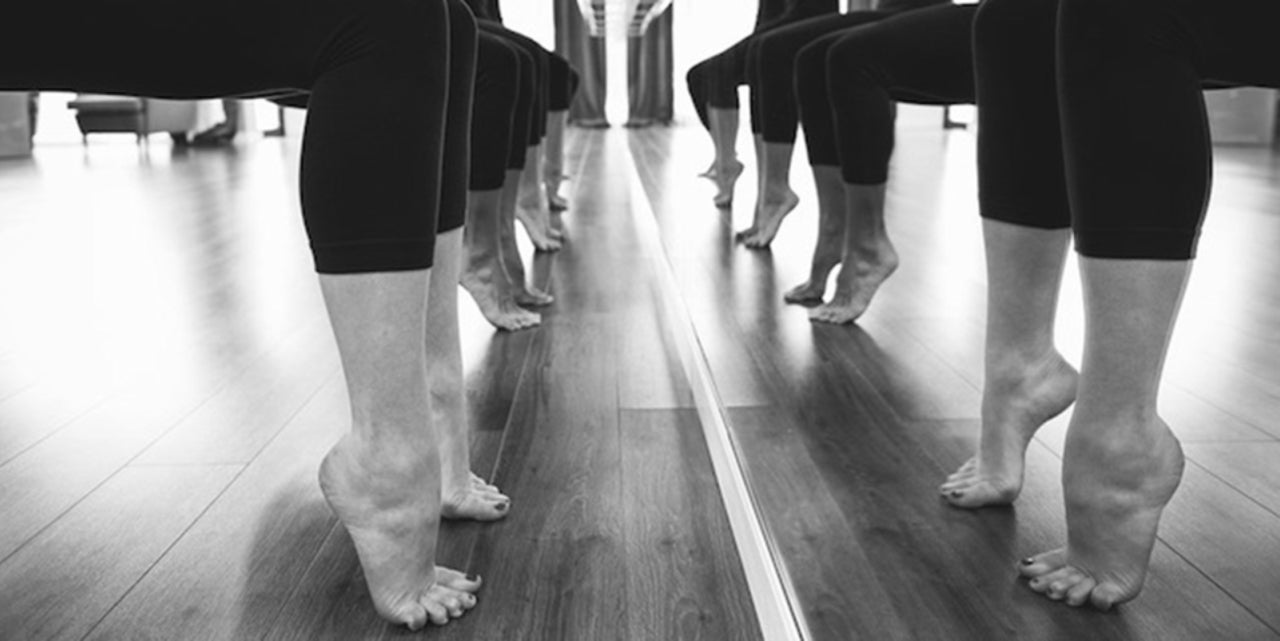
11 Dec Floor or (Standing) Barre? Choosing the Right Barre for You
As our individual passion for how our body can move and the results it has on our mind and physical strength grows, we want to keep improving our dance conditioning. Barre, one of our top favorites, can be done traditionally (with the Barre) or on the floor with BFW’s new Barre a Terre class. We will break down the differences between the two in this Barre or No-Barre description so you can choose what works for you.
(Standing) Barre Workout
Barre fitness has been described as a super-energizing full-body workout that can benefit beginners and experts alike. Originated by German dancer Loette Berk in the 1950’s, who wanted to unite her dance conditioning routine with her rehabilitation therapy after an injury, Barre was born. With each session, you are building your alignment, toning your core, and strengthening and elongating your muscles. By using the barre in the class, you have assistance to keep you balanced as you perform the small, but tight movements. With its Pilates and yoga elements, Barre classes offer a low impact, yet challenging workout that focuses on your lower body. It gets your glutes, hamstrings, and calves engaged so that you can result in a longer, leaner dancer look.
Floor Barre Workout
Floor-barre is a technique in ballet training that “takes the basic ballet barre training from the standing position to the floor, “taking the effort of standing out of the equation.” Zena Rommett originated Floor Barre in the 1960s in New York City one day in class, when she found herself telling the students at the ballet barre to “just lie down on the floor and start all over again.” Zena Rommett spent her lifetime further refining and passing on her technique until her death at 89 in New York City.
Floor Barre emerged from Boris Kniaseff’s need to deal with not having barres installed in his dance studio. He incorporated ballet movements normally done standing and moved them to sitting and laying positions on the floor. Minimal or no equipment is needed, and you are consciously forced to focus on the torso and limbs, helping direct the attention to placement, control, and alignment. The Floor Barre method has had many developments since its beginning, but it kept its focus on simple and repetitive movements that help isolate key muscles and improve proper technique. Floor Barre is also a preferred method to use when having experienced an injury, as it enables one to stay in shape without needless strain or pressure on your body.
Pick your favorite
Regardless of your choice, barre fitness is an ideal exercise for all body types, shapes, and condition. It will get you moving, make you stronger, and simply put, make you feel good! They say life without ballet is pointless (pun intended), so get dancing with any of BFW’s ballet and ballet-inspired virtual classes.
